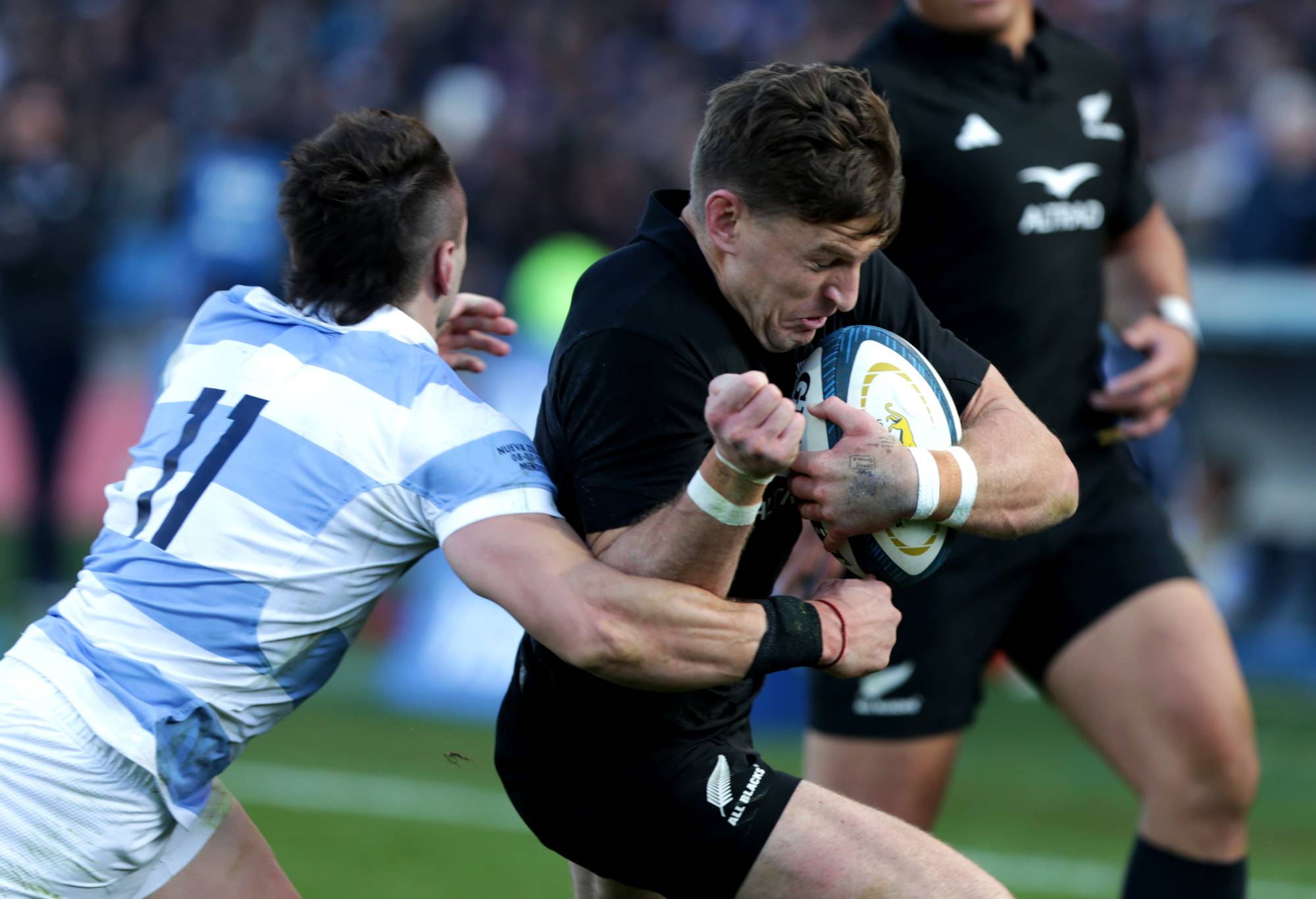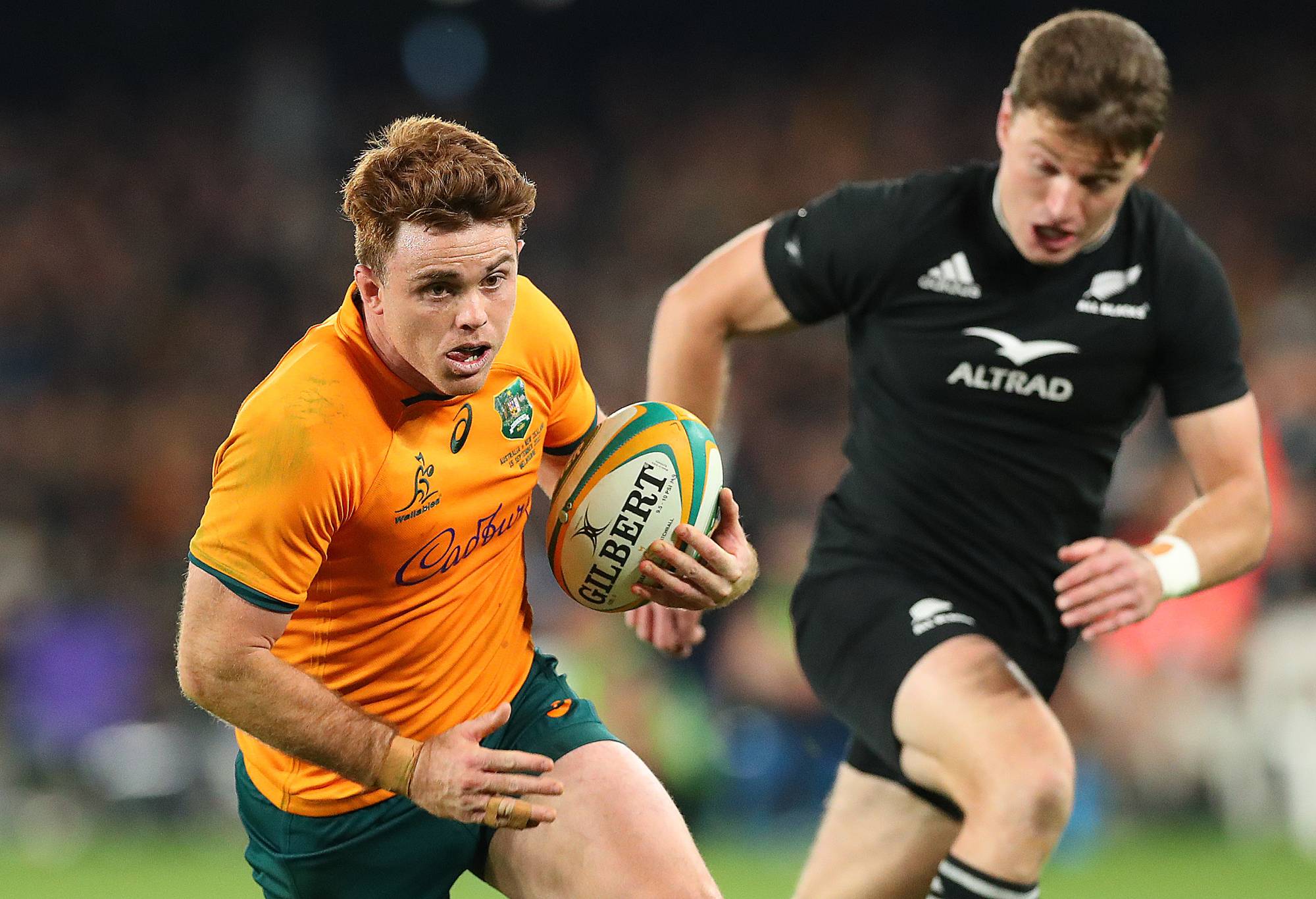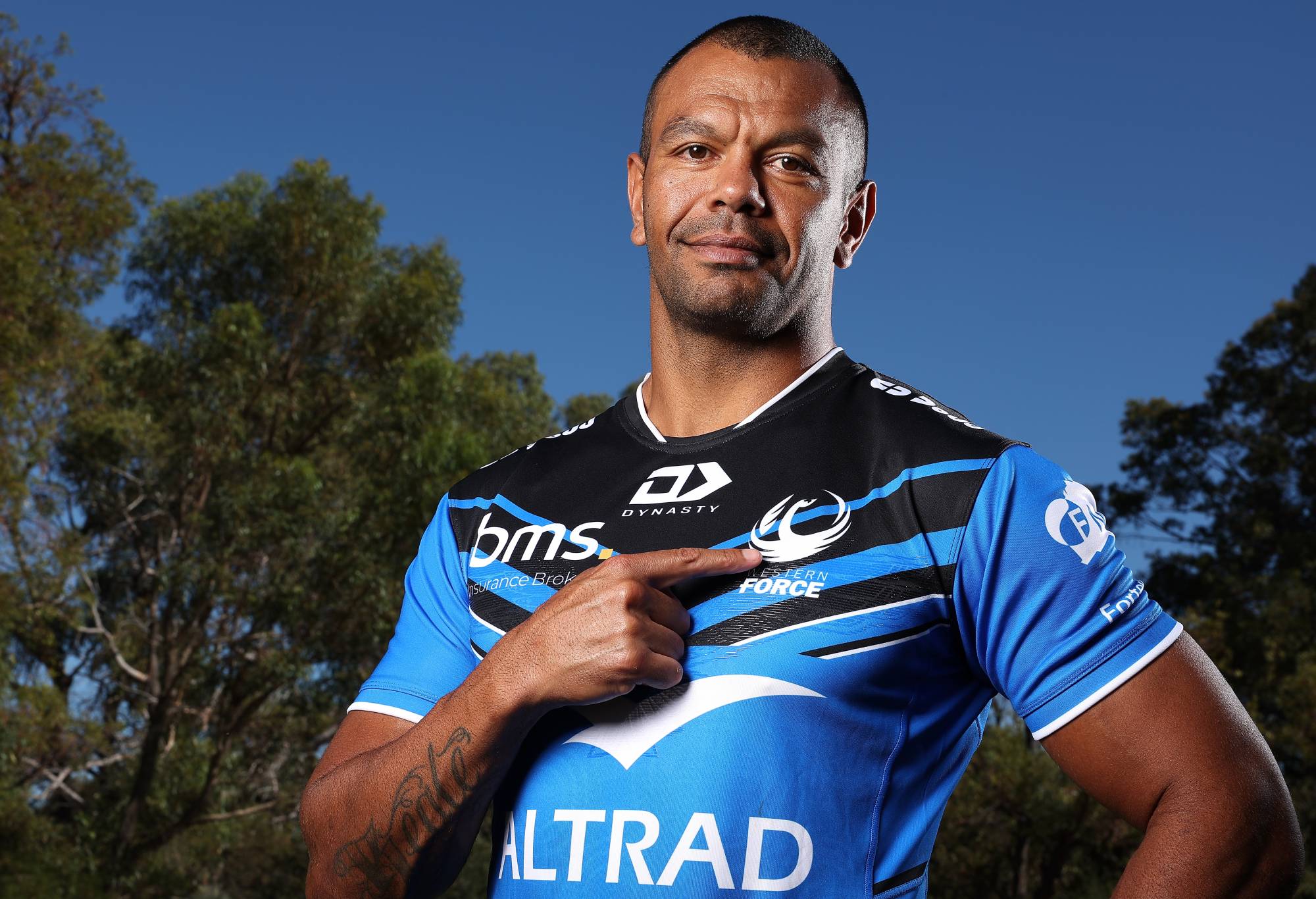Expert
In eight weeks or so a Wallaby will run onto the smooth field in Sydney with a number 15 on his back to set things right against Wales. Fullbacks have a unique ability to win or lose a Test.
The decision to counter from a loose kick or find space in a box or join the line in the red zone to make the final pass is often made by the modern second playmaker, less so the inside centre now.
The man at the back enjoys more space than any other player but has freedom to muck it up. He must chart his own course. Players one to 14 have intensely confining tasks. Fullbacks roam.
There is a theory a 15 is the alter ego of the coach, because he has the time to enact the plan.
We see Rassie Erasmus’ risk-tolerant nature in Spiders le Roux; Warren Gatland’s prickly persona in Liam Williams; Fabian Galthie’s deadly calculus in Thomas Ramos; and Andy Farrell’s focused equilibrium in Hugo Keenan.
Beauden Barrett is an outlier in that he has managed to play for any All Black coach and adapt to position and possession styles. Since le Roux was first capped as a Bok, only Barrett has more try assists (55) for a top national team; the two of them sit in an illustrious group of five (with three scrumhalves): the playmaker fullback. But a fullback does not necessarily have to pull the trigger in the red zone like Barrett and le Roux.

Beauden Barrett. (Photo by Daniel Jayo/Getty Images)
What can we make of Joe Schmidt’s past selections at 15 and 23? To what extent will he credit a player’s team’s success to the candidate? How would Tom Wright play if the Wallabies are on the back foot? If Schmidt wants a kicking general at the back, how does Andrew Kellaway fit in? How much better would Jock Campbell be if he was given more freedom to counterattack?
A new coach loves to have a chance to rectify the last loss. How sweet a statement would a big win on home soil against the team which took the Wallabies out of the reckoning in France be?
A month after that, the Rugby World Cup champion Springboks play two Tests in Brisbane and Perth. If there is one team who can make an opposition fullback’s life hell, it’s the Boks.
Who might Schmidt choose to be his last line leader? In the 2023 World Cup, as a highly involved assistant coach, Schmidt stuck with Barrett at 15.
Barrett responded with 72 carries, most of all fullbacks, and when it mattered most, Barrett was the All Black 15. He takes risks but he can win great rewards. Was Barrett at 15 a function of Schmidt’s famous set piece attack starter plans, or a negation of Damian McKenzie’s even more marginal decision making? Or did Ian Foster just pick and stick with him?
Will Schmidt be looking for a Barrett type in Australia? Or is Rob Kearney his template; or from afar, does he see Keenan as the archetype for his starter play attack and supreme cover defence?
Half of Kearney’s 98 Test caps were awarded by Schmidt. What do we take from that? With Jordan Petaia out and Schmidt highly unlikely to pick an Israel Folau-type like Mark Nawaqanitawase (his favourite, Kearney was a fullback’s fullback, unable to be seen anywhere else).
I ran a poll on X this week to get an unscientific sense of how people would go about selecting game managers and cross-referenced with the dozen or so top coaches I know: it was not that out of whack with my coach poll.
Most start with the 9-10 axis, but some think of their flyhalf first (32%), some pick scrumhalf first (24%), whilst others think of the 9 and 10 simultaneously (40%). But more active coaches begin with 15-23 than fans think: the top of the spine; the nerve centre.
So, to Schmidt’s Super Rugby Pacific candidates: the versatile and volatile Tom Wright, hitherto overlooked Jock Campbell, Andrew Kellaway (as wing as well), the polarising Kurtley Beale, and Ben Donaldson. Overseas, there are Alex Newsome for Clermont and James Ramm for the Saints.
Prior to this weekend, I sought the wisdom of the crowd on X and received these replies:
• Was a two horse race until Jock Campbell turned in a blinder against Saders last week.
• Daugunu has played well enough to get a go at the 23 jersey covering wing and 13.
• Wright and Campbell for me on form.
• Donaldson for his versatility and Kellaway for his Le Roux-esque running lines.
• Purely gut feeling: Jock Campbell. He is calm and looks like a long term baller.
• Wright is a higher risk player so may not fit Schmidt’s template.
• Kellaway rugby nous for days. Schmidt type player.
• Reward form = Wright. No 2nd chances though for his characteristic brain explosions.
• Believe Campbell and Kellaway suit the Schmidt style best; comfortable with both.
• Kellaway first choice, Wright on bench can cover wing + FB: re-earned spot in the mix.
• Kellaway is the best, most consistent 15 we have by far, should start every game.
• Kellaway has to be in the starting side at 14 or 15. His attacking stats the best of the lot.
• Wright is looking better and he is a great link player.
• Unpopular opinion: Kellaway lacks pace and physicality needed for a Test-level fullback.
• Kellaway only option. However, it does leave the no.10 as only genuine kicking option.
• Kellaway has the smarts, not as explosive and quick as other outside backs but agile.
• Benefit of Tom Wright is his playmaking and organisation of the rest of the backline.
• Risk is he tries to win the game himself and it blows up.
• Jock’s defence is not good enough at international level.
• Kellaway is a really smart player; a low risk taker, but consistently chooses best option.
• Kellaway head and shoulders above the rest.
• Tom Wright at this stage for me. Kellaway back up.
• Brumbies backline with Paisami at 12.
• Kells is smartest back. Wright more elusive but not sure makes up for poor decision making.
The synthesis of all that stacks Kellaway first, then Wright, and Campbell far behind.

Andrew Kellaway. (Photo by Kelly Defina/Getty Images)
But Campbell backed his recent form up in Brisbane this weekend, instrumental in the victory over the Rebels. In one scintillating gallop to the try line, turning Kellaway inside out, the Reds fullback showed how he may resemble Keenan more than the other Aussie applicants. Kellaway had his moments, too, and has a vital 5 kg over Campbell (who is precisely the size of Keenan).
Beale offers risk all over the show: on and off the field.
Wright provides the biggest risk and reward at Test level. Wright divides public opinion. His good moments are big. His errors are large, as well. He can get caught up in jawing and posing.
A couple of mistakes by a fullback, a charge-down or kick out on the full or missing a read or tackle or getting jackaled on an ill-advised runback: cost a team five points more easily than any other position’s mishaps. If he were French, he would be printed into the team sheet; and then blamed mercilessly if he erred in a close match.
To some extent, Wright is cursed by the opposite of recentism: there are long memories of his flaws. Wright’s day at Loftus in 2023, with 26% of the territory in the first half and 37% of the ball for the match was a nightmare. But it was not his fault.
The problem was it reminded all of Australia about that similarly awful game with the Brumbies. Thus, after Jones had said Wright “has the ability to be the world’s best fullback” Wright missed the worst World Cup in Australian history, ceding the French version of a nightmare, le cauchemar, to Donaldson (Georgia and Fiji) and Kellaway (the Wales and Portugal games).
According to Opta, Donaldson played 292 of 320 minutes; Kellaway 130. Donaldson had 2 try involvements; Kellaway none. Donaldson had 19 carries; Kellaway 17. Donaldson made it over the gain line 53% of the time, Kellaway a mere 35%. Both missed three of every ten tackles.
A caveat: the Wallabies made it wider than second receiver the least in the tournament: 3.5% of attack plays (just below Romania) because the real issue for the team was at number ten. Set pieces were above average; the kicking strategy was a bloody mess, and the backline was given by Eddie Jones to novices to run. Fullbacks cannot do much when the attack scheme is that stunted: they depend on the third channel to function.
Another caveat: run metre statistics are tricky. Fullbacks lead most competitions in metres made because they have a free ten yards on the catch. But making the wrong choice on kick long, kick up, kick on the angle, pass the buck to a mate, or go on an expedition to be snaffled or not. No other player has this freedom and fate. Schmidt is known for his iron fist on unnecessary risk.
He did not allow many Irish players to attempt offloads: “You cannot offload.” But Kearney could.
Fullbacks are less cookie cutter in today’s rugby than any other slot. I would eliminate Beale and Donaldson from the equation as not being much like Kearney or Keenan or Barrett.
Beale is yesterday’s anti-hero and does not fit into a Schmidt autocracy. Donaldson is unlucky, and Joe likes “lucky” players who work hard to be lucky. Irish hero Keenan might be the “luckiest” 15 of all: try to find a moment in any recent game where Keenan is out of position. He may be the fittest fullback in the world. Whether he can run as fast as some or leap as high: not as important as his understanding of where he should be.

(Photo by Paul Kane/Getty Images)
Ultra fit Campbell of the Reds fits into the Keenan mould, as does Newsome, but I doubt Schmidt will risk a Top 14 contract dispute with Clermont, even if Newsome is very much in the mold he likes. Ramm is more of a wing.
Kellaway might be the like-for-like to Kearney: cool customers, not that pacey but in the right areas and confident in collisions. This season, Kellaway is among the league leaders in busted tackles: he knows how to find weak shoulders and arms.
Wright is the strongest tackler of the three top candidates.
My summation is I do not know who Schmidt will pick, but if I were pretending to be him, I’d begin with Campbell against Wales, Kellaway on the wing, and Wright on the bench as a versatile finisher. By the time Georgia is dispatched, I would have my back three sorted for the Boks, Pumas, and All Blacks, and perhaps 2025.